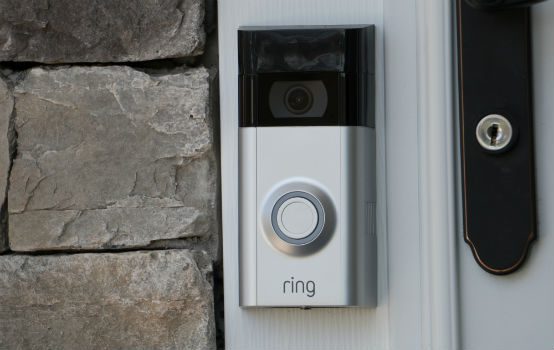Amazon is Teaming Up With Police for Mass Surveillance

What do you call the use of a network of cameras that are constantly recording and can be accessed by police? Well, according to Ring, Amazon’s home security company, somehow the answer isn’t “surveillance.”
Ring, which has joined into secretive partnerships with local law enforcement agencies, granting them access to video from people’s doorbell cameras, has reportedly prevented police from describing the partnership as “surveillance.” This they can do because the contract allows Ring to review any police press releases before they’re sent out. It’s ridiculous, of course, because it keeps people in the dark about what their law enforcement agencies are up to. Yet perverse incentives make it a beneficial arrangement for both police and Ring. Police get a shiny new tool for investigating crimes, while Ring gets to sell cameras there may not have been a market for in the first place.
After all, this is a surveillance system. Through the use of its Neighbors app, Ring allows police to request video footage from anyone who has a doorbell camera—no warrant required. All they need is the consent of the camera owner. Those being filmed have no say in the matter. Furthermore, the company is reportedly urging police departments to do all they can to get as many residents as possible to “opt-in” to sharing footage. The company is even coaching officers on how to convince residents to turn over video.
As University of the District of Columbia Law Professor Andrew Guthrie Ferguson put it to the Washington Post, Ring convinces residents that these cameras are necessary by playing into the “perceived need for more self-surveillance and by playing on consumer fears about crime and security.” This despite the fact that American crime rates remain at, or near, record lows.
Ring also sells, and sometimes even gives away, cameras to police departments. According to CNET reporter Alfred Ng, police use the company’s heat map to determine which neighborhoods don’t have a heavy camera presence. Then they either actively advertise or give out the cameras to residents in those neighborhoods. The goal is simple: to ensure that every neighborhood has police-accessible doorbell cameras installed. That, coupled with publicly owned cameras in public spaces like parks, allows for a system of near-mass surveillance in local municipalities.
Mountain Brook, Alabama, Police Chief Ted Cook put it this way: police can “‘digitally cover a block in a few seconds.’” Sort of sounds like surveillance, doesn’t it?
Such a vast network may sound far-fetched, but some towns, like Bloomfield, New Jersey, are essentially blanketed in Ring cameras. The heat map for Bloomfield shows that you can’t even walk down a residential street without being seen on a doorbell camera. That footage can then be shared with police without that person’s consent. All police need to do is ask the owner of the camera for access to the footage; the person being surveilled has no knowledge that it’s happening and has no right to consent. If they don’t want to be surveilled, they’d better just stay off the street.
The amount of footage police can access when they’re investigating a specific case is startling and often goes beyond the scope of the investigation. Say a crime occurred at 10 a.m. at 123 Main Street. Ring’s police portal allows the agency to request 10 hours worth of footage from all cameras inside a geo-fenced area around 123 Main Street. The geo-fencing could be as specific as that exact address or a much broader, multi-mile radius. And then, with the push of a button, the request goes out.
Unfortunately, Ring’s appeal to law enforcement appears to be growing, as partnerships are becoming more and more ubiquitous. On August 28, the Washington Post reported that Ring has partnered with more than 400 agencies across the U.S. Previously, Ring’s arrangements with police were kept mum: the most holistic look into their dealings had come from privacy activist Shreyas Gandlur, who has been submitting Freedom of Information Act (FOIA) requests to obtain details. He determined that the company was working with at least 332 law enforcement agencies across the country. That number was only 231 when Gandlur first launched this map at the beginning of August. As a matter of fact, the agreements are often kept so underwraps that the non-profit Fight for the Future was only able to discover 50 such arrangements before Gandlur’s report.
If being unwittingly caught on camera when walking down the street by a company that works with hundreds of law enforcement agencies, and potentially having that footage shared with police, doesn’t constitute “surveillance,” then what does? We certainly shouldn’t leave that up to Amazon to decide.
Dan King is a senior contributor at Young Voices, where he covers civil liberties and criminal justice reform. His work has appeared at Reason, The American Conservative, The Week, and The Weekly Standard.
Comments